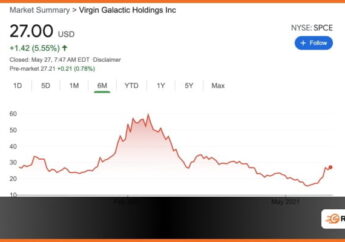The Essential Guide to Bond Types: Understanding the Basics and Benefits
by Barsha Bhattacharya Investing Published on: 28 March 2025 Last Updated on: 07 May 2025

As an investor, you can buy different types of bonds as financial instruments to earn interest. Actually, when you buy a bond, you lend money to the issuer. This can be either a government entity or a business.
For a long time, bonds have played a big part in investing. This is because it offers stability and predictable returns. While they may not always generate the excitement of stocks or cryptocurrencies, they play a crucial role in portfolio diversification and wealth preservation.
So, whether you are a beginner investor looking for steady income or an experienced trader seeking risk-adjusted returns, it is better to get a good idea of different types of bonds.
What Is a Bond in Investing?

A bond, in investment terms, is a fixed-income instrument where you, as an investor, lend money to a company or a government.
Here, you earn interest for a particular period of time. Here, the government entity or the business pays you with interest. Apart from that, they obviously pay back the original face value of the bond.
In general, companies and government entities use bonds to finance operations and projects.
Major Types of Bonds That Are Used in Investing
There are different types of bonds that government entities and businesses use. For instance, one of the safest investments is to invest in government bonds. In general, national governments issue those bonds. Basically, it offers a steady income stream and is often used for wealth preservation.
One example is U.S. Treasury bonds. These come in the form of T-bills (short-term), T-notes (medium-term), and T-bonds (long-term). On the other hand, the UK issues gilts, while European nations offer Eurozone bonds, such as German Bunds.
Here, the latter are low-risk due to government backing, highly liquid, and provide reliable income.
1. Corporate Bonds
Companies issue corporate bonds to finance their expansion and operations. Basically, these bonds vary in credit quality and return potential.
For instance, investment-grade bonds, rated BBB or higher, are considered more stable, whereas high-yield (junk) bonds carry greater risk but offer higher returns. Basically, these bonds tend to provide higher yields than government bonds, come in a wide range of risk and return options, and suit income-focused investors.
2. Municipal Bonds
Generally, local governments issue municipal bonds (“munis”) to fund public projects. These include schools, roads, and other utilities. These bonds often provide tax benefits, making them attractive to certain investors. General obligation bonds have the backing of the issuer’s full faith and credit.
On the other hand, revenue bonds are repaid using income from specific projects (toll roads are an example). Investors benefit from potential tax-exempt interest income, support for local infrastructure, and lower default risk compared to corporate bonds.
3. Emerging Market Bonds
Generally, governments and big corporations issue emerging market bonds in developing countries. Primarily, these bonds offer higher yields but come with risks such as currency fluctuations and political instability.
Hence, if you are seeking higher return potential, diversification, and exposure to growing economies, these bonds might appeal to you.
4. Inflation-Protected Bonds
Inflation-protected bonds help safeguard investors against inflation by adjusting their principal value based on inflation rates. This way, they ensure the preservation of purchasing power. Treasury Inflation-Protected Securities (TIPS), issued by the U.S. government, and UK Index-Linked Gilts serve this purpose.
Moreover, these bonds help maintain real returns, support long-term retirement planning, and reduce inflation-related investment risks.
5. Convertible Bonds
Convertible bonds function as hybrid securities. Hence, you can convert them into company stock at a predetermined price. Also, they provide the security of a bond while offering the potential for capital appreciation.
In general, with these instruments, you can benefit from rising stock prices while maintaining lower risk than direct equity investments. Apart from that, they generate a steady income through interest payments.
6. Zero-Coupon Bonds
Zero-coupon bonds do not pay periodic interest but are sold at a discount and repay their full face value upon maturity. This structure offers long-term growth potential and eliminates reinvestment risk, as there are no periodic interest payments.
In fact, these bonds are particularly suitable if you need a future lump sum to fund goals such as retirement or education.
7. Green Bonds
Green bonds finance environmentally friendly projects, including renewable energy, clean transportation, and climate change initiatives. Basically, these bonds are gaining popularity as sustainable investing trends grow.
In addition to that, they provide an opportunity to support eco-friendly initiatives. Apart from that, they also potentially offer tax incentives. Hence, if you are looking for socially responsible investing, this can be appealing to you.
Moreover, if you want to learn about investing in bonds further, see more to discover additional resources on bond types and how they work.
Major Factors to Consider When Investing in Bonds
Before you invest in bonds, you need to ensure that those investments align with your financial goals and go at par with your risk tolerance. Hence, the following are the factors you need to consider before investing in different types of bonds:
- Credit Risk and Ratings: Credit ratings from agencies like Moody’s and S&P indicate an issuer’s financial stability. In fact, higher-rated bonds are safer but offer lower yields.
- Interest Rate Risk: Here, the movement of bond prices is inverse to their interest rates. So, when there is a rise in interest rates, bond prices fall, and vice versa.
- Yield Curves and Economic Cycles: The yield curve reflects investor expectations for future interest rates. Hence, a steep curve suggests economic growth, while an inverted curve may signal a recession.
- Tax Implications: Some bonds, such as municipal bonds, offer tax advantages, while others may be subject to capital gains tax.
- Liquidity: Government and corporate bonds tend to be more liquid than municipal or emerging market bonds. Hence, these affect how quickly they can be bought or sold.
Are You Investing in Bonds?
Bonds offer a versatile investment option, catering to both conservative and aggressive investors alike. So, whether you are looking for safety, a steady income, or diversification, you must understand different types of bonds and their associated benefits. This will help you a lot in making informed investment decisions.
However, if you are a conservative investor, you can choose government and high-quality municipal bonds. In general, these provide low-risk options that ensure capital preservation and reliable returns.
On the other hand, if you are an aggressive investor, you can explore corporate bonds, including high-yield or emerging market bonds. This shall enable you to capture higher potential returns despite the accompanying risks.
Hence, once you include bonds in your investment strategy, you can achieve a well-rounded portfolio. It shall align with your financial goals and risk tolerance. However, it’s essential to continuously assess your bond holdings as market conditions, interest rates, and economic cycles evolve.
Moreover, you need to understand the dynamics of bond markets. This will allow you to make strategic decisions that maximize returns and minimize risk. Thereby, you will be able to align your investments with your broader financial objectives.



































































































